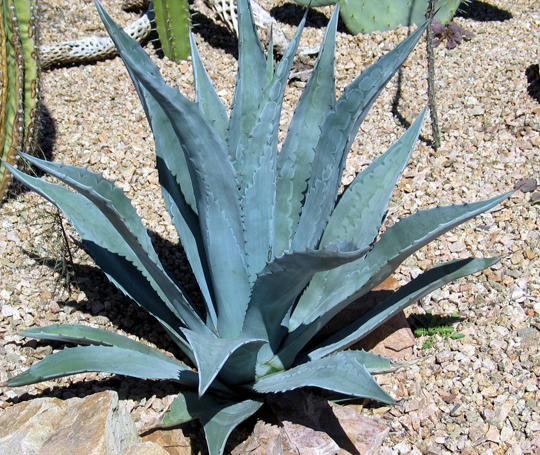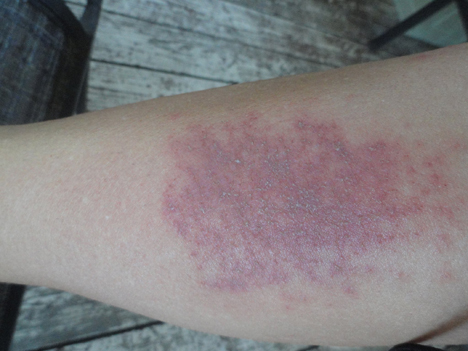
When landscaping in dry, sandy areas, century plants (Agave Americana) are often a popular choice when xeriscaping is in mind. The plant is drought tolerant, and does well in the sandy soil of coastal landscapes. The leaves get up to 6′ long and 10″ wide, and the flower stalk is branched, 20-40′ tall, it bears large yellow-green flowers.
However, most folks are not aware the Agave Americana has several toxic compounds. It contains the irritating calcium oxylate raphides (microscopic daggers of crystaline oxylate) as well as irritating oils in the sap.
If your skin encounters the agave, wash affected areas, add cool compresses for pain and swelling, and treat with antihistamines if needed. Even safer, consult your doctor immediately.
Santa Rosa Beach resident Kelly Roe explains her recent encounter with a century plant:

“Last Wednesday began like any other day. I was having coffee out on the deck and looking at an area of my yard I wanted to change.
My cactus was big but I felt like it was too close to my fence and couldn’t grow to its full potential, thus never blooming. I decided to try to move it myself. I needed to cut off two of the very bottom leaves so I could get a shovel to the base of it.
At first, I whacked it a couple of times with a small hatchet. That didn’t work very fast so I got my clippers and began to cut the thick, gooey flesh. I tossed a piece behind me and it brushed against my leg.
‘No big deal’ I thought, ‘probably a lot like an aloe’ and I continued on. One shovel in and a little twisting and it came right up.
I went on to do some other things in the yard and never thought about the cactus hitting my leg. Later that day, it started to get a little red but again, didn’t think much of it. It didn’t itch, didn’t hurt. The next day it was more inflamed and it started to hurt when I walked. I couldn’t believe it. I did some looking on the Internet and found that it is indeed, poisonous. Calcium oxalate raphides are crystals contained in the leaves and can cause redness, irritation, and pain. And when I say pain, I mean pain! After sitting for a period and then I stand up, pain. Standing at the kitchen counter, pain! It’s the most bizarre thing I think I’ve ever felt. The only thing I can think that comes close is a motorcycle muffler burn.
After five days, the pain is finally starting to go away. It is still very red and it’s starting to itch. I’m hoping the itch is a sign that it’s healing. I just know that I had no clue about it and I’m betting many others aren’t aware of this reaction. Consider yourself warned. Wear protective clothing and certainly gloves when working with this plant.”
